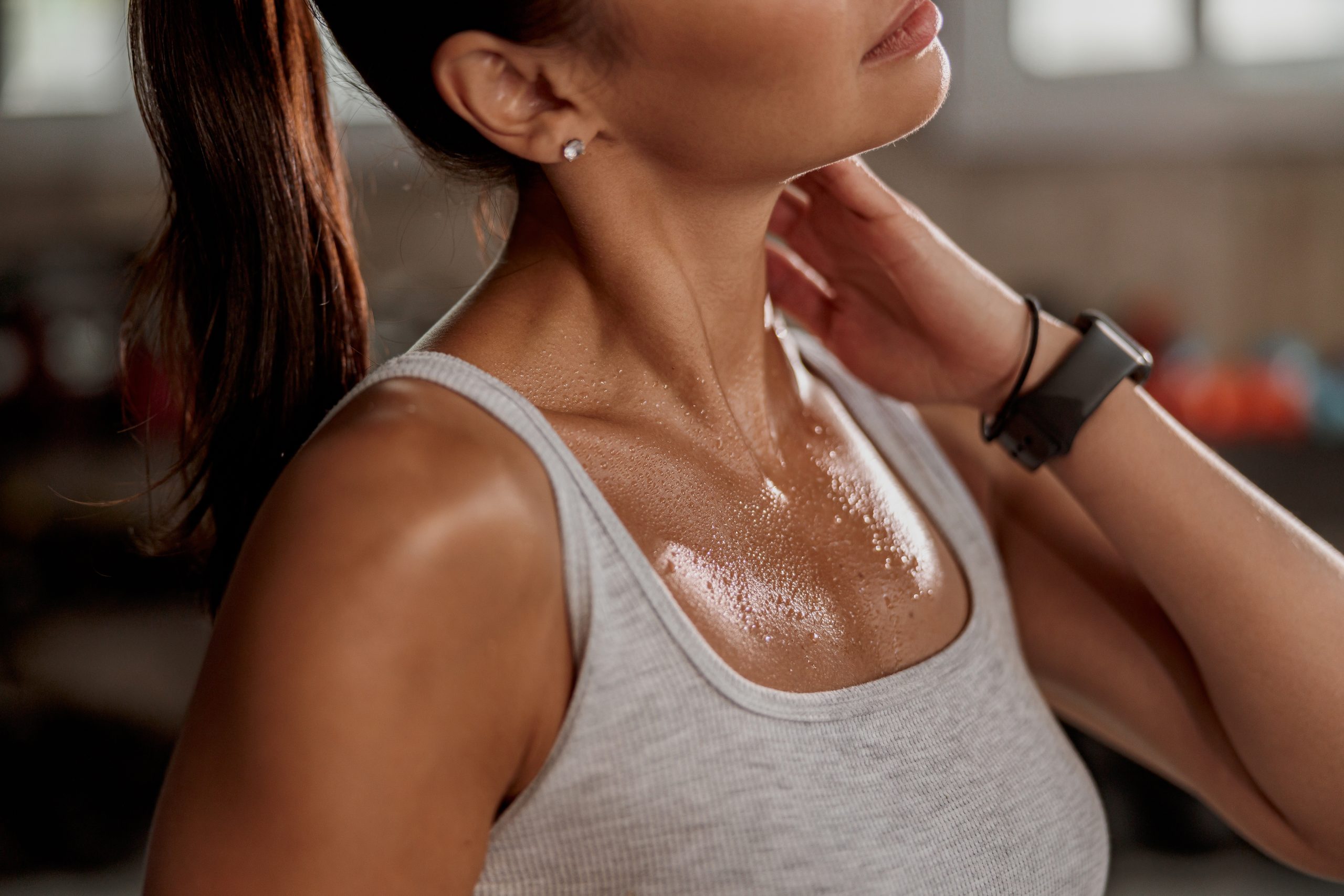
Plant extracts and sweating: an aid from nature for regulating a vital function
Sweating is a physiological mechanism through which our body emits a liquid produced by sweat glands in order to regulate body temperature and perform other functions, such as excreting ‘waste’ substances or non-verbal communication. However, while it is normal to sweat a little more than usual when it is hot, and it is normal to sweat a lot more than usual when engaging in strenuous physical activity, there are situations in which abnormal sweating may be a sign of some psychophysical alteration.
Hyperhidrosis, or excessive sweating
Our body normally secretes at least half a liter of sweat per day. When significantly larger amounts are produced under the same conditions, we talk of hyperhidrosis, which can be generalized or localized, as in typical cases of excessive sweating on the palms of the hands, armpits, feet or face. These situations can cause embarrassment, social discomfort or limitations in daily activities, as well as a feeling of unease or a decline in the quality of life.
Hyperhidrosis can be classified as primary, when no apparent causes are found, or secondary, when a psychophysical cause is diagnosed.
In the former case, excessive sweating is due to the sympathetic nervous system sending false signals to the sweat glands, even when the body does not require thermoregulation.
In the latter case, there may be several related causes: diseases or infections (hyperthyroidism, tuberculosis, HIV, blood cell or bone marrow disorders, tumors), bad habits or addictions (alcohol and drugs), physical conditions (obesity), use of certain medications or temporary physiological conditions, such as menopause.
Hypohidrosis and anhidrosis, or decreased sweating
There is also the reverse phenomenon, i.e. decreased sweating, a disorder that can occur as reduced sweating (hypohidrosis) or absence of sweating (anhidrosis), often accompanied by dryness of the skin in the affected area. In this case as well, the causes may be different (use of medication, injuries or diseases) and can result in an impact on the quality of life, such as weakness, dizziness, muscle cramps, excessive heat sensation and reddening of the skin.
In both cases, we are dealing with situations that require medical attention; however, there are botanicals that can help regulate sweating and related disorders. Let us see which plants have traditionally been used for this purpose.
Botanicals and sweating regulation
There are several plants whose phytocomplex can help to regularize the sweating process.
It is ancient knowledge that herbal teas or decoctions made from sage leaves, sipped or used as foot bath, have astringent properties and reduce sweat production. Sage (Salvia officinalis L.) promotes the regulation of sweating and counteracts menopause-related symptoms, as confirmed by numerous scientific studies. Indeed, it is believed that the phytoestrogens contained in sage can improve vasomotor symptoms, such as hot flashes and night sweats.
Lapacho tea, made from the bark of the Tabebuia tree (Tabebuia avellanedae Lorentz ex Griseb), has been used for millennia by indigenous populations in South America, who considered it a true panacea. This plant supports the body's depurative functions and helps regulate excessive sweating.
The flower heads of chamomile (Matricaria chamomilla L.) are traditionally used to promote the regulation of sweating and also have soothing and emollient effects on the skin, even in cases of irritation due to excessive sweating, commonly known as ‘heat rash’ or ‘miliaria’, which primarily affects infants and children during the summer months. In fact, according to a review conducted by the College of Pharmacy, Shandong University of Traditional Chinese Medicine, recently published in Molecules, its chemical constituents possess anti-infective and anti-inflammatory properties, among others.
Finally, the flowers of black elder (Sambucus nigra L.) and the flowering aerial parts of meadowsweet (Filipendula ulmaria L.), also known as “queen of the meadow”, contain phytochemical substances with diaphoretic action, which can improve hypohidrosis and anhidrosis.
In summary, sweating-related disorders, whether in excess or deficiency, can be contingent and physiological. However, when they become an impediment to normal daily activities or have repercussions on the quality of life, they should immediately raise concerns about an altered psychophysical health condition. After evaluation by a primary care physician and, if necessary, a skin specialist, plant extracts can represent a valid and effective alternative to restore well-being.
To learn more about our extracts, visit the dedicated section on our website at www.eposrl.com/en/our-extracts/